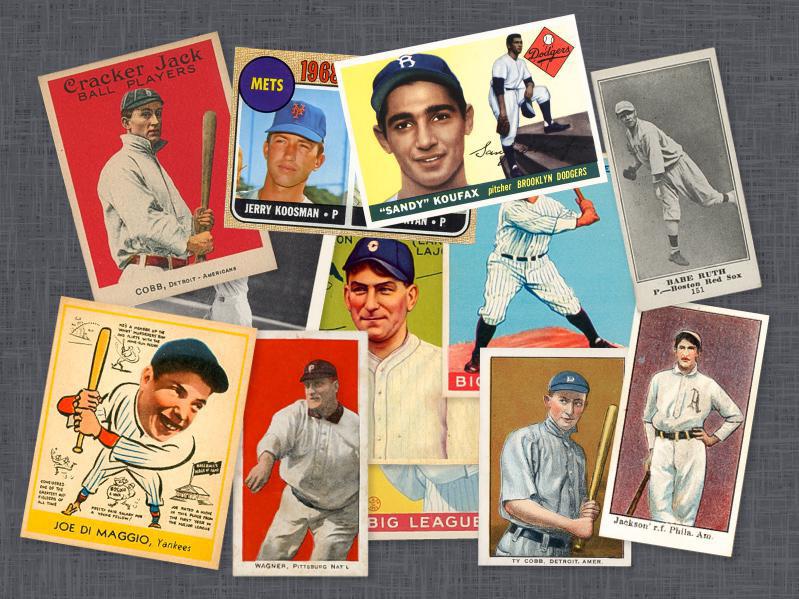
Value means different things to different people. Some never realized the value in collecting baseball or football cards because the market fell apart. Cards were meant to package and sell to kids so they could search for their favorite players. So even though the value of most cards is basically worthless, for kids who bought and traded the memories and the search are what matters.
This would have been about 1988 or 1989,
just as I was getting into middle school. I’m not sure if it was my age or the
popularity of card collecting but it seemed most of my friends bought and
traded. Upper Deck was the best card. Expensive and glossy, you paid at least twice as much as Tops, the cheapest. I had some
other brands as well like Donruss and Fleer; Upper deck had the best look
though. Their cards had a consistently high trade value. Like most kids I
checked the price guides as much as possible. I never quite understood the
magic of card pricing. Who exactly determined what a card was worth? Did a
player’s performance drive the value or was it the scarcity of the thing?
I can understand how the condition of the
card worked, nearly new looking surface with sharp corners were considered
mint. The opposite was true for cards thrown into a shoe box and shuffled around like playing cards in a casino. Mostly that’s what mine were, crumpled and torn. I remember
being in a card store and checking out the cards behind the glass case. I saw a
familiar rookie card for Rams Quarterback Jim Everett. The guy was selling it
for 12 bucks and I was pretty sure I had it. I rushed home and threw open the
closet. I frantically dug through my bunches of mixed baseball and football cards until I
found it. Boom! I knew it. There it was, the pricey card with the Los Angeles
QB in his helmet. Problem was it looked like one of those Post It notes with a
phone number you crinkled up and threw out, deep grooves crisscrossing the
surface. The worst card in the box, it wasn’t even close. I could hardly read
the print, looked like it got wet at some point. The only surprise was why I
managed to keep it at all. Shortly after that I started using plastic sheets
and binders.
Card price was something to check on and
possibly brag about. It was never a way to make money or have a showy
collection. It existed as a hobby until it didn’t. I always had the idea that
by saving the cards I’d sell them someday for a good price. The dream of possessing
some rare collection faded like the color on my Everett card. Basically everything from that era is worthless now.
The market became flooded by card companies overprinting popular sets. We
understand how supply and demand works so what happened to make everyone forget
the rule? Too much of a thing forces its price down. Maybe the idea that cards
could ever be “worth” something is silly on its face. Aside from a few pre-war tobacco cards (Honus Wagner) or a Mickey Mantel rookie, most have personal appeal.
Any company that has the ability to create
more of a thing due to popularity is going to do it. If you ever watch Antique
Road Show or follow any of these ‘pickers’ type serials, rarity is usually the
key ingredient in value. Either something is made by hand, or manufactured
using a process we don’t use anymore. Certain items get created in small
batches and keep their value, while old typewriters or vintage lamps haven’t
been made for years. Card companies just kept printing to the point where no
one could hope to make any money. But card collecting for those who just wanted
cards of their favorite players was an adventure.
I always looked for Nolan
Ryan cards. I especially tried to find sets of cards within a series. Upper deck did a
series of Nolan Ryan cards called “Baseball Heroes”. I think they did a few
players the same way, with a full set of collectibles. They weren’t rare but
looking for them became a mini event. I eventually got the whole series by
trading or buying them from shops. I just googled them to see how much they’re
worth, most go for $2 per card, sad really. But the same way a photograph evokes
a memory, a 1991 Nolan Ryan card is surprisingly loaded with memories. In fact
just flipping through the plastic sheets and carefully laying them one on top
of the other brings specific events to mind.
The value for me is in the finding. Maybe that's a bit like saying, "it's the journey, not the destination".
Collecting is a fun way to make weekend trips and vacations more enjoyable. The card pricing racket was more mystery than
formulaic standard. Once you get past rarity and condition, the only thing to
do is find the best players, or the one’s you like. That’s basically what I
did. Besides, what if you have a card worth $20? Who is going to pay you for
it?
Better to hold on to it and remember what
you gave up to get it. That's the real value anyways; who said baseball cards are worthless?
No comments:
Post a Comment